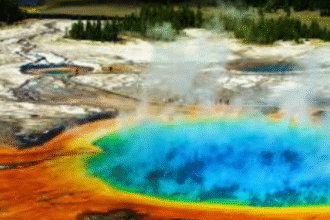July 28, 2025 — Ali Khamenei, the Supreme Leader of Iran, has become the focal point of mounting geopolitical friction as Israeli officials issue unprecedented threats, Israeli-linked accounts allege compromising behavior, and Iran shifts its ideological posture in response to regional turmoil.
Israel’s Defense Minister Targets Ali Khamenei Directly
On July 27, Israeli Defense Minister Israel Katz delivered a stark warning: “If you continue to threaten Israel, our long hand will reach Tehran again with even greater force—and this time directly to you personally.” Katz referred to Ali Khamenei as a “dictator,” and reiterated that Israeli military threats extend beyond institutional targets to personal accountability.
The warning follows the 12-day Iran-Israel war in June, when Operation Rising Lion struck Iranian military and nuclear facilities. Israeli strikes reportedly killed senior Iranian commanders, fueling fears within Tehran of further assassinations and escalating reprisals
Mossad-Linked X Account Alleges Scandalous Behavior
Adding to the pressure, a Mossad-affiliated social media account on X claimed that Ali Khamenei spends half of his day sleeping and the rest allegedly “high on illicit substances.” The post further accused the Supreme Leader of negligence while Iran grapples with widespread water and electricity shortages, triggering international mockery and condemnation.
Iranian officials have yet to comment on the allegations. Intelligence analysts suggest the authenticity of the account is bolstered by the sensitive information it shares, though Mossad has not confirmed any affiliation.
Ideological Shift: Promoting Pre-Islamic Nationalism
In a strategic pivot, Ali Khamenei has increasingly embraced pre-Islamic Iranian heritage, once condemned by the Islamic Republic as corrupt. Analysts say this ideological shift is driven by the need to rally a disillusioned populace amid rising domestic dissatisfaction and geopolitical isolation.
Public messaging now prominently features historical names and Persian emblems—signaling a pragmatic adaptation aimed at unifying the nation during prolonged conflict and hardship.
Succession Uncertainties Grow as Leadership Frays
Security concerns and internal fractures have elevated speculation around Ali Khamenei’s succession. Sources report that Khamenei has reportedly named several senior clerics as potential successors—omitting his son Mojtaba from the list, signaling a departure from dynastic patterns of succession.
Meanwhile, factions within the regime are divided between hardliners pushing continued confrontation and moderates advocating dialogue, further complicating the future leadership dynamic.
Consolidating Control Amid Crisis
On July 25, representing Ali Khamenei, cleric Hosseini Hamedani called for a high-tech crackdown, referring to online opposition as an “Operation Mersad” style threat. This reveals a regime moving toward intensified digital surveillance and suppression.
In parallel, Iranian President Masoud Pezeshkian has called for dialogue with dissidents and advocated democratic reforms—rhetoric sharply contrasting the regime’s hardline messaging.
Mourning and Mobilization: Iran Commemorates Losses
Marking 40 days since top regime figures were assassinated, Ali Khamenei delivered a fatalistic yet defiant address on July 27. He vowed that despite recent losses, Iran’s scientific and military progress will surge “toward lofty horizons.” The speech emphasized unity amid domestic grief and international pressure.
Who Is Ali Khamenei?
At 86, Ayatollah Ali Khamenei has led Iran since 1989, overseeing both ideological and military operations. His rule has come under unprecedented scrutiny following the June battles with Israel and rising global criticism over Iran’s nuclear ambitions and human rights record.
Public protests across Iran have reignited slogans such as “Death to Khamenei,” underscoring widespread discontent with the Supreme Leader’s policies and leadership.
Why This Matters
| Issue | Implication |
|---|---|
| Escalating Threats | Israeli threats mark a rare shift toward personal targeting of Ali Khamenei. |
| Domestic Instability | Internal divisions expose vulnerabilities in leadership and succession planning. |
| Ideological Shift | A growing emphasis on pre-Islamic nationalism signals political maneuvering. |
| Information Warfare | Mossad-linked allegations aim to delegitimize Ali Khamenei internationally. |
Conclusion
The spotlight on Ali Khamenei is intensifying—from assassination threats by Israel to ideological recalibrations at home. As the regional order shifts and internal dissent grows, the Supreme Leader’s future hangs in precarious balance. Continued surveillance by global powers, regime resilience, or internal fragmentation—only time will reveal the true trajectory of Iran’s leadership.






